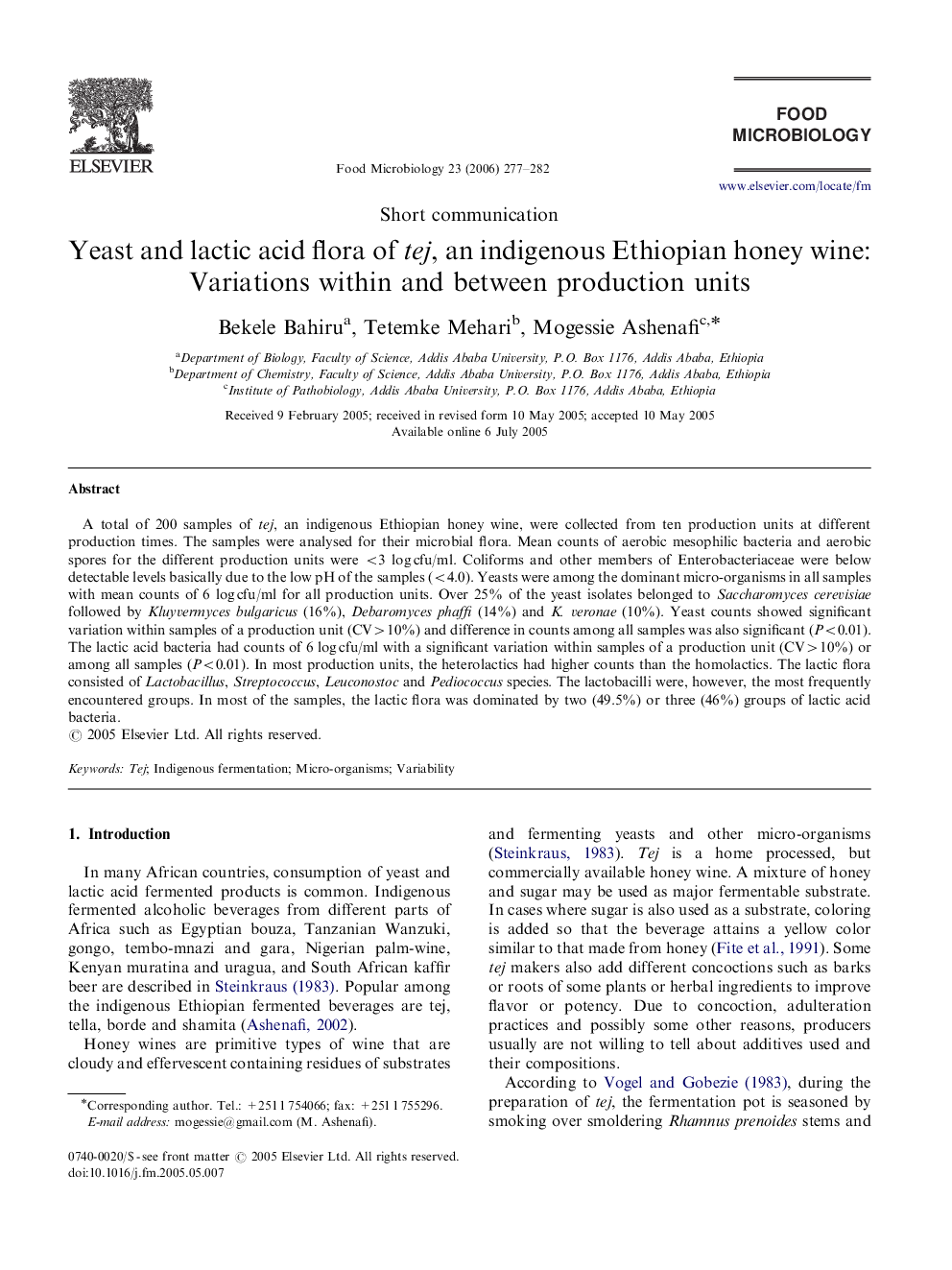| Article ID | Journal | Published Year | Pages | File Type |
|---|---|---|---|---|
| 4364010 | Food Microbiology | 2006 | 6 Pages |
A total of 200 samples of tej, an indigenous Ethiopian honey wine, were collected from ten production units at different production times. The samples were analysed for their microbial flora. Mean counts of aerobic mesophilic bacteria and aerobic spores for the different production units were <3 log cfu/ml. Coliforms and other members of Enterobacteriaceae were below detectable levels basically due to the low pH of the samples (<4.0). Yeasts were among the dominant micro-organisms in all samples with mean counts of 6 log cfu/ml for all production units. Over 25% of the yeast isolates belonged to Saccharomyces cerevisiae followed by Kluyvermyces bulgaricus (16%), Debaromyces phaffi (14%) and K. veronae (10%). Yeast counts showed significant variation within samples of a production unit (CV>10%) and difference in counts among all samples was also significant (P<0.01P<0.01). The lactic acid bacteria had counts of 6 log cfu/ml with a significant variation within samples of a production unit (CV>10%) or among all samples (P<0.01P<0.01). In most production units, the heterolactics had higher counts than the homolactics. The lactic flora consisted of Lactobacillus, Streptococcus, Leuconostoc and Pediococcus species. The lactobacilli were, however, the most frequently encountered groups. In most of the samples, the lactic flora was dominated by two (49.5%) or three (46%) groups of lactic acid bacteria.
